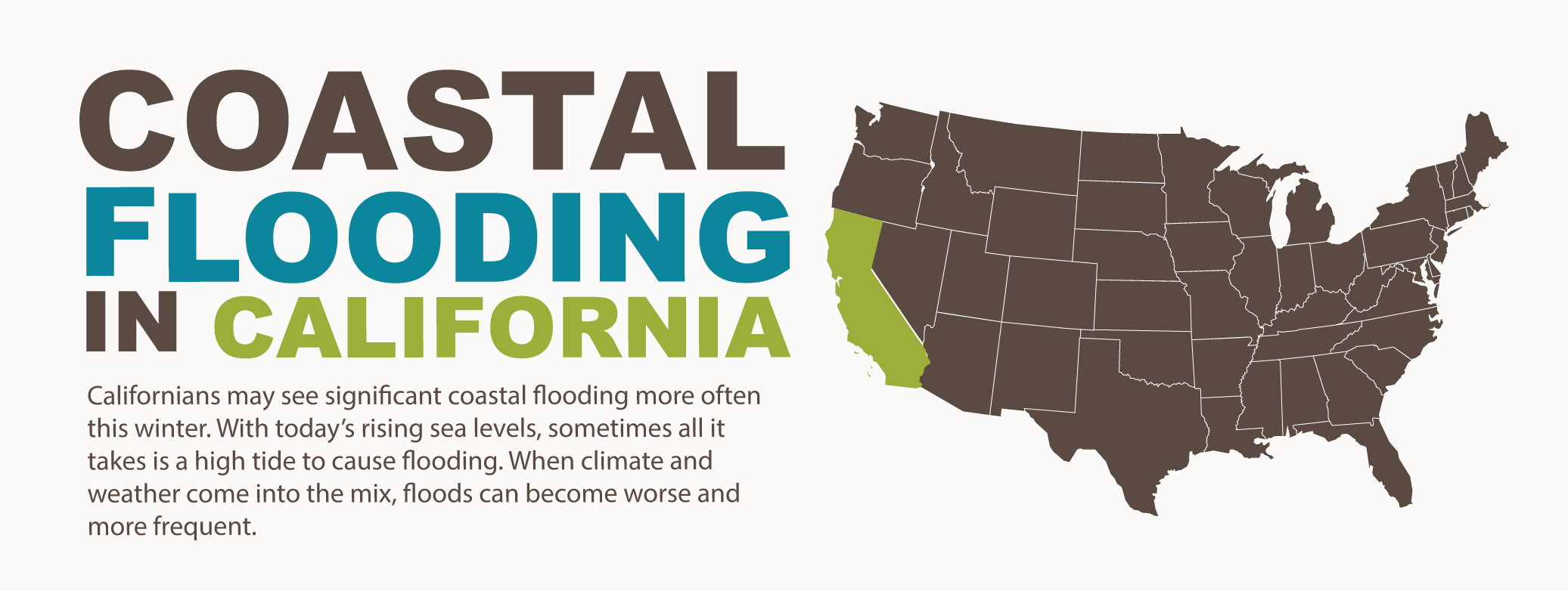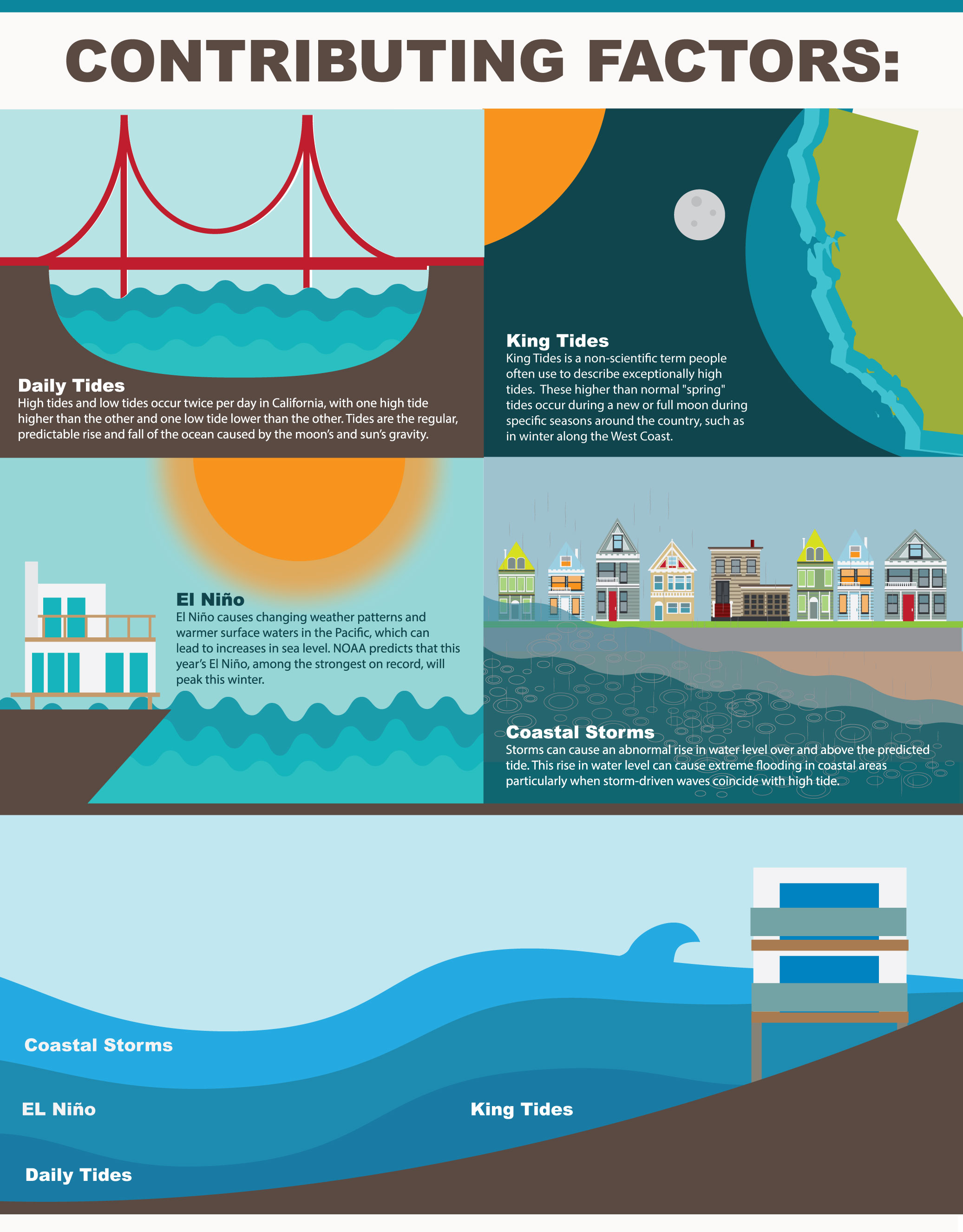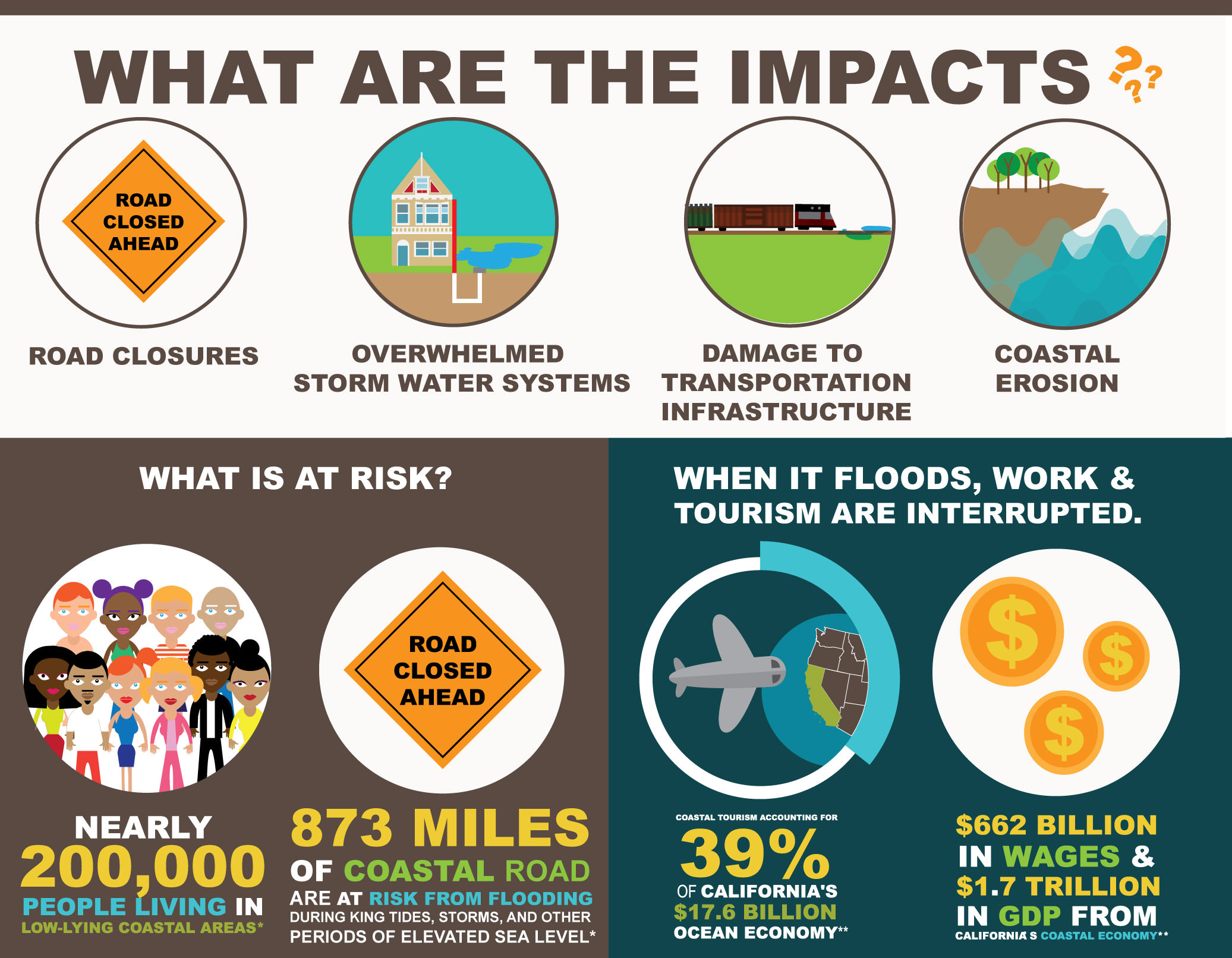Coastal Flooding in California: What You Need to Know

Californians living on the coast may be used to seeing so-called “King Tides,” a regular phenomenon where high tides are higher than normal on certain days of the year. This winter, King Tides — also known as spring tides — are even higher due to El Niño, causing flooding in low-lying areas of California’s coast.
In November and December, 2015, sea levels in southern California were more than half a foot above normal. Over Thanksgiving, observed tides at several NOAA tide stations in Southern California were higher than ever measured before, even during storms, which caused minor flooding around San Diego. Californians may see similar high water levels throughout the winter, especially when more King Tides are predicted to occur. Flooding impacts may become significantly worse if King Tides coincide with a coastal storm.
Why are California's high tides higher this year?

Several factors are contributing to California's unusually high tides.
- Daily tides: High tides and low tides occur twice per day, with one high tide higher than the other and one low tide lower than the other. Tides are the regular, predictable rise and fall of the ocean caused by the gravity of the moon and sun.
- King tides: This is a non-scientific term people often use to describe exceptionally high tides. These higher than normal "spring" tides occur during a new or full moon during specific seasons around the country, such as in winter along the West Coast.
- El Niño: El Niño causes changing weather patterns and warmer surface waters in the Pacific, which can lead to increases in sea level. NOAA predicts that this year's El Niño, among the strongest on record, will peak this winter.
- Storm Surge: Storm surge is the abnormal rise in water level caused by a storm, over and above the predicted tide. This rise in water level can cause extreme flooding in coastal areas particularly when storm surge coincides with high tide.
"King Tide" is a non-scientific term people often use to describe exceptionally high tides. These higher than normal "spring" tides occur during a new or full moon and when the Earth is at its perigee, or during specific seasons around the country. In California and much of the West Coast, they occur in the months closest to the winter and summer solstices. These alignments in space and time are fairly predictable, and so are King Tides.
One difference this year is the occurrence of an El Niño, which NOAA predicts will be the strongest on record. Put simply, when there is an El Niño, sea levels on the West Coast are generally higher due to warmer, expanded ocean waters and changing weather patterns. Tides “ride” on top of sea level and are influenced by what is happening at any given time with climate and weather. This means that normal everyday high tides are already higher because of El Niño. On days when there are King Tides, they become even higher.
Another factor to consider is coastal storms and waves, which can cause an increase in water level on top of the already higher-than-normal tides. If a winter storm coincides with a King Tide event in this El Niño year, the total water levels may be extreme, and impacts may be even greater.
Climate scientists predict that El Niño will peak sometime in January-February of 2016, meaning that Californians can expect these especially high tide events to last through the winter.
Californians can expect impacts to population and infrastructure.

Nuisance flooding can lead to road closures, overwhelmed storm water systems, damage to transportation infrastructure, and coastal erosion. Nearly 200,000 Californians live in low-lying coastal areas and 873 miles of coastal roads are at risk from flooding during King Tides, storms, and other periods of elevated sea level. When flooding occurs, work and tourism are also interrupted: coastal tourism accounts for 39 percent of California's $17.6 billion ocean economy; the state's coastal economy accounts for $662 billion in wages and $1.7 trillion in Gross Domestic Product.
Because of today’s rising sea levels, sometimes all it takes is a high tide to cause flooding. Those who live, recreate, and work on the coast may be impacted when minor flooding covers roads, parking lots and sidewalks, or other infrastructure is compromised. Nearly 200,000 Californians live in coastal areas lower than 1 foot below sea level, putting homes and over 870 miles of roads at risk.
If roads are flooded, some people might not be able to easily get to work or school. That could impact California’s coastal economy, which accounts for $662 billion in wages and $1.7 trillion in GDP.
Those living along the coast may experience greater flooding impacts during storms. Residents of coastal communities should prepare when bad weather is in the forecast, by staying informed of conditions and having a severe weather plan.
King Tides + El Niño
Californians living on the coast may be used to seeing so-called "King Tides," a regular phenomenon where high tides are higher than normal on certain days of the year. This winter, King Tides — known to scientists as spring tides — are even higher due to El Niño, causing minor nuisance flooding in low-lying areas of California's coast.

